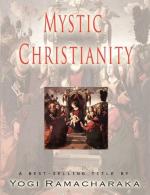The passage in both creeds stating that He then took his place “on the right hand of the Father” is intended to show that He took the place of the highest honor in the gift of the Father. The mystic teachings explain this by showing that The Christ is separated from The Father by but the most ethereal intervening of spiritual substance, and that He is a Cosmic Principle second in importance only to the Father. Truly this is the place of honor on “the right hand of the Father.”
“He shall come to fudge the quick and the dead.”
In this passage we see the intimation that not only with the “quick” or living people is The Christ concerned, but also with the “dead,” that is, with those who “passed out” before and after His time and who have passed on to the Astral World, as we have explained in this lesson. Whether or not the framers of the Creed so understood it—whether or not they were deluded by the tradition of the “Day of Judgment”—certainly the Early Christians, or rather, the mystics among them, understood the teachings as we have given them and spoke of Him as “living in the dead as well as in the living,” as one of the occult records expresses it.
“The communion of saints” is the spiritual understanding of the Mysteries by the Illumined Ones. “The forgiveness of sins” is the overcoming of the carnal mind and desires. “The resurrection of the dead and the life of the world to come” is the promise of life beyond the grave, and not the crude idea of the physical resurrection of the body, which has crept into the Apostles’ Creed, evidently having been inserted at a later date in order to bolster up the pet theories of a school of theologians. Note that the Nicene Creed says merely “the dead” and not “the body.” The version of the teachings preserved by the Mystics has a corresponding passage, “And we know the truth of the deathlessness of the soul.” (The italics are ours.)
The consideration of remaining passages in the creeds, relating to the existence of the “Holy Ghost,” must be deferred until our next lesson.
THE TENTH LESSON
THE SECRET DOCTRINE.
The concluding statement of the Creeds (brought over from the preceding lesson) refers to the Holy Ghost.
“I believe in the Holy Ghost.” (Apostles’ Creed.)
“And I believe in the Holy Ghost, the Lord and giver of life.” (Nicene Creed.)
To the average Christian the nature of the Holy Ghost—one of the beings of the Trinity—is veiled in obscurity, and is generally pronounced “not to be understood.” A careful examination of the orthodox Christian writings will show the student that the Church is very much at sea regarding this subject, which should be of the greatest importance to its priests and congregations. Ask the average intelligent churchman regarding the nature of the Holy Ghost, and see for yourself the vague, contradictory and unsatisfactory concepts held by the person questioned. Then turn to the encyclopaedias and other books of reference, and see how little is known or taught regarding this important subject.




